| Linked Data is a set of practices which involves the publishing, sharing, and connecting of related data across the Web in a structured format, preferably using an open access license. |
Why use Linked Data?
Using Linked Data is a way to make online library resources—even those items having metadata and located in online library catalogs—accessible to the Web at large by publishing the data in a standard, openly-accessible way.
Properly described and published, online library resources could be harvested by search engines and linked to from other online resources. In order to do this, Linked Data must be structured in a standard way for the Web.
On the cataloging and description side, Linked Data from online resources such as the Virtual International Authority File (VIAF) can serve as global authority records.
The Basics
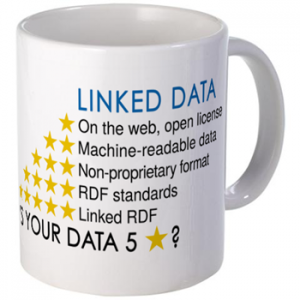 Tim Berners-Lee defined his four principles of Linked Data in 2009:
Tim Berners-Lee defined his four principles of Linked Data in 2009:
- Use URIs as names for things
- Use HTTP URIs so that people can look up those names
- When someone looks up a URI, provide useful information, using the standards (RDF*, SPARQL)
- Include links to other URIs so that they can discover more things.
Linked Data has two components: URI and RDF.
URI (Uniform Resource Identifier) is a location as name of a digital resource on the Web, typically given in the form of a Uniform Resource Locator (URL) that also gives the protocol (ex. HTTP) of accessing it.
RDF (Resource Description Framework) is a standard structured file (often in XML) which describes a digital resource and contains URIs.
For a Linked Data statement, you need three components: subject, predicate, and object. These together are referred to as a triple.
<subject> <predicate> <object>
Subject – what’s being described and linked, a URI or blank node.
Predicate – describes the connection, always a URI.
Object – the resource being linked to, a URI, literal, or blank node.
<Atlas Shrugged> <was created by> <Ayn Rand>
One framework for moving library metadata records into Linked Data format is BIBFRAME, the replacement for MARC being developed by the Library of Congress and others. We will continue to see new tools created for the conversion of library metadata formats (such as Dublin Core) into Linked Data formats (such as RDF/XML and Turtle).
Finally, as more library records are converted and made available as Linked Data, we will see library vendors start to utilize Linked Data in their products. For example, Ex Libris recently announced that the company has launched a program to “harness linked data technology in its resource management and discovery solutions” and published the paper Putting Linked Data at the Service of Libraries.
Resources
Here are some great online resources to learn about Linked Data:
Articles and books about Linked Data and libraries:
Common Ground: Exploring Compatibilities Between the Linked Data Models of the Library of Congress and OCLC by Carol Jean Godby and Ray Denenberg
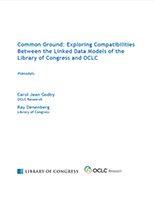 “Jointly released by OCLC and the Library of Congress, this white paper compares and contrasts the compatible linked data initiatives at both institutions. It is an executive summary of a more detailed technical analysis that will be released later this year.” Published in 2015.
“Jointly released by OCLC and the Library of Congress, this white paper compares and contrasts the compatible linked data initiatives at both institutions. It is an executive summary of a more detailed technical analysis that will be released later this year.” Published in 2015.
Access the abstract and full-text article (PDF).
Library Linked Data in the Cloud: OCLC’s Experiments with New Models of Resource Description by Carol Jean Godby, Shenghui Wang, and Jeffrey K. Mixter
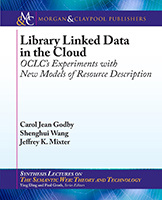 Part of the “Synthesis Lectures on the Semantic Web: Theory and Technology” series. OCLC looks at Linked Data in cataloging and its products. Topics include authority records including VIAF, cataloging and FRBR, text mining, and the library Linked Data cloud. Published in 2015.
Part of the “Synthesis Lectures on the Semantic Web: Theory and Technology” series. OCLC looks at Linked Data in cataloging and its products. Topics include authority records including VIAF, cataloging and FRBR, text mining, and the library Linked Data cloud. Published in 2015.
Watch the companion video (59:50).
View details and find a place to buy or borrow at Google Books.
Library Linked Data: Research and Adoption by Erik T. Mitchell
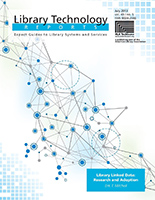 This title is actually an issue of Library Technology Reports from ALA Tech Source. The report covers basic metadata in libraries and museums, Linked Open Data (LOD), case studies including BIBFRAME, and “issues, opportunities, and trends” in metadata. Published in 2013.
This title is actually an issue of Library Technology Reports from ALA Tech Source. The report covers basic metadata in libraries and museums, Linked Open Data (LOD), case studies including BIBFRAME, and “issues, opportunities, and trends” in metadata. Published in 2013.
View details and find a place to buy or borrow at Google Books.
Linked Data for Libraries, Archives and Museums: How to Clean, Link and Publish your Metadata by Seth van Hooland and Ruben Verborgh
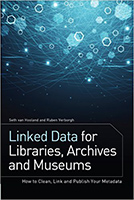 In this book published by the American Library Association, the authors cover Linked Data and focus on the metadata standards supporting it. They present key concepts of metadata including metadata modelling, cleaning, reconciling, enriching, and publishing. Published in 2014.
In this book published by the American Library Association, the authors cover Linked Data and focus on the metadata standards supporting it. They present key concepts of metadata including metadata modelling, cleaning, reconciling, enriching, and publishing. Published in 2014.
View details and find a place to buy or borrow at Google Books.
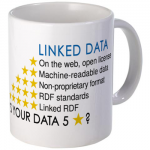 Linked Data is a set of practices which involves the publishing, sharing, and connecting of related data across the Web in a structured format, preferably using an open access license.
Linked Data is a set of practices which involves the publishing, sharing, and connecting of related data across the Web in a structured format, preferably using an open access license.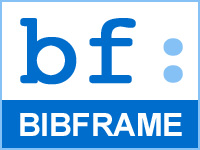 BIBFRAME is a bibliographic framework for the description of physical and online objects to make them accessible on the Web by using a standard Linked Data model. It is a replacement for MARC.
BIBFRAME is a bibliographic framework for the description of physical and online objects to make them accessible on the Web by using a standard Linked Data model. It is a replacement for MARC. Altmetrics are “alternative metrics” to measure the influence and reach of scholarly output on the Web through peer-review counts, influential news sites and blog posts, citation manager bookmarks such as Mendeley, Wikipedia citations, and social media mentions on sites such as Twitter and Facebook.
Altmetrics are “alternative metrics” to measure the influence and reach of scholarly output on the Web through peer-review counts, influential news sites and blog posts, citation manager bookmarks such as Mendeley, Wikipedia citations, and social media mentions on sites such as Twitter and Facebook.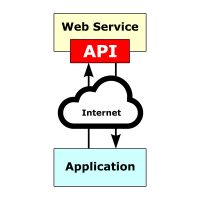 API stands for Application Programming Interface which allows external applications to access software or Web services data, in the latter case by using HTTP request messages, for recombination (mashup) or custom presentation by the external application.
API stands for Application Programming Interface which allows external applications to access software or Web services data, in the latter case by using HTTP request messages, for recombination (mashup) or custom presentation by the external application.
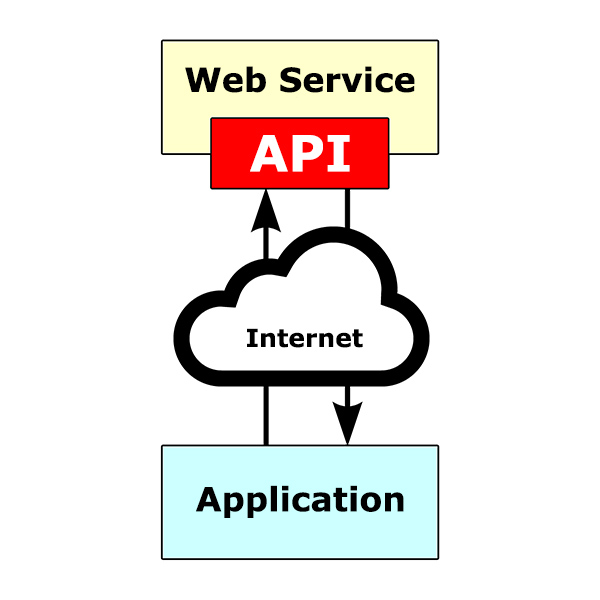
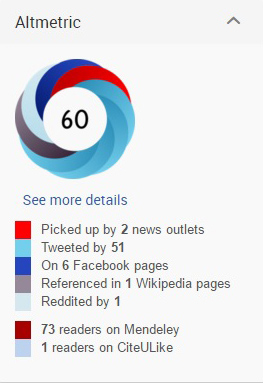 In October 2015, ProQuest announced the addition of Altmetric badges to
In October 2015, ProQuest announced the addition of Altmetric badges to 

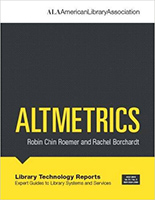 This title is actually an issue of Library Technology Reports from ALA Tech Source. The report “outlines both the promises and major obstacles faced by the field of altmetrics” as well as covers the librarian’s role in providing education and support of altmetrics. Published in 2015.
This title is actually an issue of Library Technology Reports from ALA Tech Source. The report “outlines both the promises and major obstacles faced by the field of altmetrics” as well as covers the librarian’s role in providing education and support of altmetrics. Published in 2015. This forthcoming book gives an overview and the theory behind altmetrics. It looks at the ways libraries can utilize altmetrics and educate researchers. To be published in June 2016.
This forthcoming book gives an overview and the theory behind altmetrics. It looks at the ways libraries can utilize altmetrics and educate researchers. To be published in June 2016.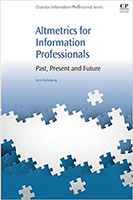 This scholarly book looks at key altmetrics research innovations. It presents the data sources used. Finally, it looks to the future to determine alternative metric trends. Published in 2015.
This scholarly book looks at key altmetrics research innovations. It presents the data sources used. Finally, it looks to the future to determine alternative metric trends. Published in 2015.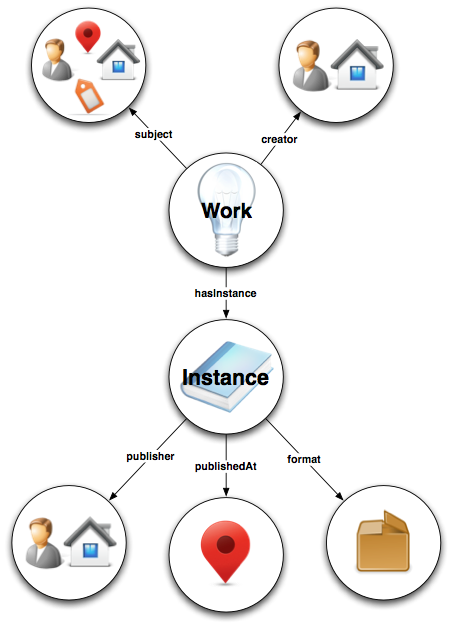
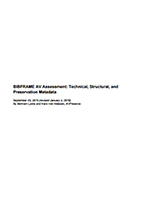 This paper, undertaken on behalf of the Library of Congress, investigates how metadata of audiovisual material can be best handled using BIBFRAME. Sections cover preservation, structural, and technical metadata. Appendices give examples of video, audio, and film examples. Published in 2015, revised January 4, 2016.
This paper, undertaken on behalf of the Library of Congress, investigates how metadata of audiovisual material can be best handled using BIBFRAME. Sections cover preservation, structural, and technical metadata. Appendices give examples of video, audio, and film examples. Published in 2015, revised January 4, 2016.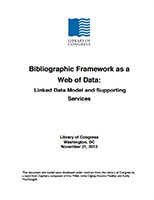 Straight from the source, this paper is an early look into the BIBFRAME model to introduce the subject and begin discussion. It covers the four classes (Creative Work, Instance, Authority, and Annotation) and vocabulary. The papers covers related initiatives such as OCLC’s WorldCat, Schema.org, RDA, and FRBR. Published in 2012.
Straight from the source, this paper is an early look into the BIBFRAME model to introduce the subject and begin discussion. It covers the four classes (Creative Work, Instance, Authority, and Annotation) and vocabulary. The papers covers related initiatives such as OCLC’s WorldCat, Schema.org, RDA, and FRBR. Published in 2012.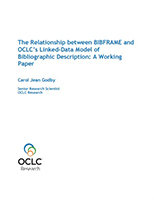 “This document describes a proposed alignment between BIBFRAME and a model being explored by OCLC with extensions proposed by the Schema Bib Extend project, a W3C-sponsored community group tasked with enhancing Schema.org to the description of library resources.” The paper also covers FRBR and gives examples of BIBFRAME in Turtle and RDF/XML syntax. Published in 2013.
“This document describes a proposed alignment between BIBFRAME and a model being explored by OCLC with extensions proposed by the Schema Bib Extend project, a W3C-sponsored community group tasked with enhancing Schema.org to the description of library resources.” The paper also covers FRBR and gives examples of BIBFRAME in Turtle and RDF/XML syntax. Published in 2013.
 “Jointly released by OCLC and the Library of Congress, this white paper compares and contrasts the compatible linked data initiatives at both institutions. It is an executive summary of a more detailed technical analysis that will be released later this year.” Published in 2015.
“Jointly released by OCLC and the Library of Congress, this white paper compares and contrasts the compatible linked data initiatives at both institutions. It is an executive summary of a more detailed technical analysis that will be released later this year.” Published in 2015. Part of the “Synthesis Lectures on the Semantic Web: Theory and Technology” series. OCLC looks at Linked Data in cataloging and its products. Topics include authority records including VIAF, cataloging and FRBR, text mining, and the library Linked Data cloud. Published in 2015.
Part of the “Synthesis Lectures on the Semantic Web: Theory and Technology” series. OCLC looks at Linked Data in cataloging and its products. Topics include authority records including VIAF, cataloging and FRBR, text mining, and the library Linked Data cloud. Published in 2015. This title is actually an issue of Library Technology Reports from ALA Tech Source. The report covers basic metadata in libraries and museums, Linked Open Data (LOD), case studies including BIBFRAME, and “issues, opportunities, and trends” in metadata. Published in 2013.
This title is actually an issue of Library Technology Reports from ALA Tech Source. The report covers basic metadata in libraries and museums, Linked Open Data (LOD), case studies including BIBFRAME, and “issues, opportunities, and trends” in metadata. Published in 2013. In this book published by the American Library Association, the authors cover Linked Data and focus on the metadata standards supporting it. They present key concepts of metadata including metadata modelling, cleaning, reconciling, enriching, and publishing. Published in 2014.
In this book published by the American Library Association, the authors cover Linked Data and focus on the metadata standards supporting it. They present key concepts of metadata including metadata modelling, cleaning, reconciling, enriching, and publishing. Published in 2014.